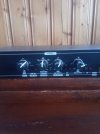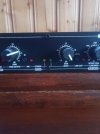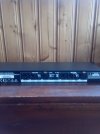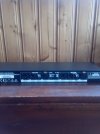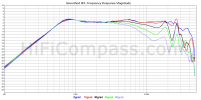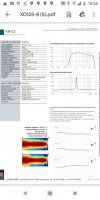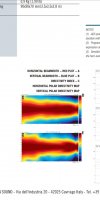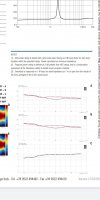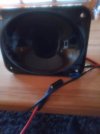"Protection of our treasure midrange drivers, tweeters and super-tweeters" is always one of the critical features in multichannel multi-amplifier active audio system!
I highly recommend you to use "proper" protection capacitors for your treasure mid-range drivers, tweeters and super-tweeters.
I use these, 68 microF Caps for Be-midrange squawkers, 10 microF Caps for Be-Tweeters and metal horn super-tweeters;
View attachment 223591
View attachment 223592
And, I carefully compared the Fq responses in SP level signal "before and after" the protection capacitors as shared
here and
here; I confirmed that these protection capacitors have little (or no) audible Fq effect.
Also please note;
- Elimination of magnetic susceptible metals in SP signal handling: #250,
#013(remote thread)
- VCT (vinyl Cabtyre) multicore flexible cables (AWG10, AWG12) for amplifiers into speaker drivers: #028,
#137
As for "protection of SP drivers",
shutdown sequences and
ignition (startup) sequences for the total system should be carefully considered and implemented.
Even though I know many people use 5 - 12 VDC trigger function(s) of DAC(s) and amplifier(s) for simultaneous ignitions all together, IMHO, it should be avoided from safety point of view.
And, at least your "master volume" should be off or minimal (minus infinity dB position) at the system ignition. I myself believe all of the digital and analog SP gains should be also off or minimal at the ignition to protect our precious SP drivers from unexpected clipping and/or possible ignition pops.
Just for reference, at least I myself am always much careful in
"shutdown sequences" and
"ignition (startup) sequences" in my multichannel multi-amplifier setup, as I shared
here.
And so on, and so on...
We have several "common" critical issues/features for building our multichannel multi-amplifier active audio system. Whatever hardware and/or software you would select and implement, therefore, you would please carefully look at, prior to your first step, the hyperlink index (
here or
here) for my project thread which well covers almost all of the critical issues, I assume.


